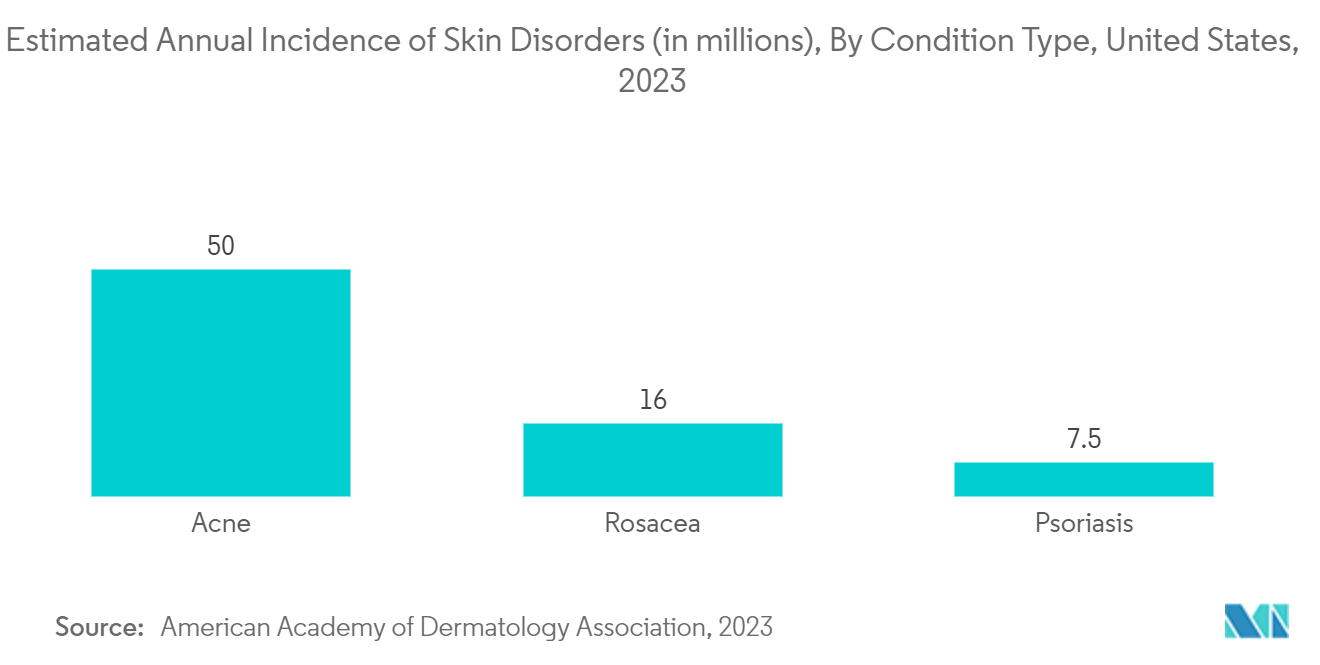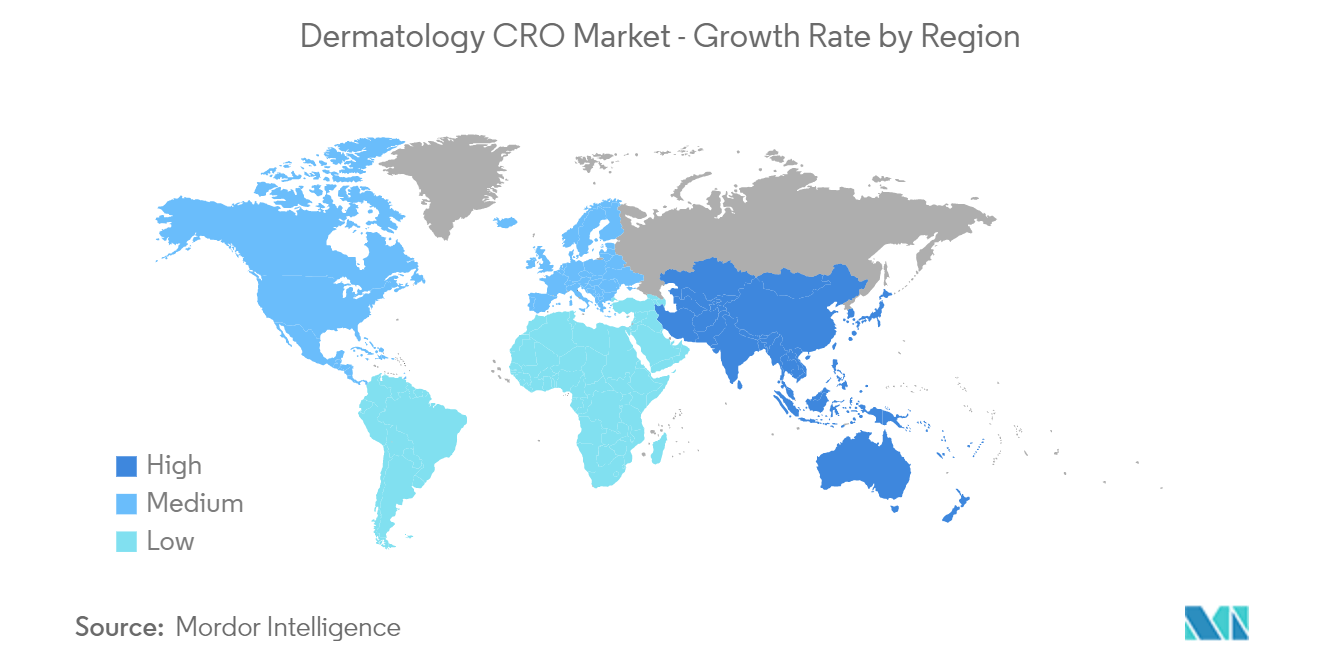Market Trends of Dermatology CRO Industry
Drug Discovery Segment is Anticipated to Witness Significant Growth Over the Forecast Period
Various drugs, such as biological drugs, offer several benefits, including highly effective and potent action, fewer side effects, and the potential to cure various skin diseases rather than merely treat the symptoms, significantly increasing the demand for these products. Thus, the need for drug discovery is increasing and is anticipated to grow during the forecast period.
The demand for drug discovery is increasing in dermatology due to a high number of populations suffering from various skin diseases. For instance, the high prevalence of acne among the target population is one of the major driving factors for the segment's growth. For instance, according to a research article published in Frontiers in Medicine in October 2022, acne occurs predominantly during adolescence and prepuberty. It is one of the most common skin conditions globally. As per the above source, in China, the estimated prevalence of acne varies from 8.1 to 85.1% depending on the locality and age of the studied objects. Thus, such a high burden of acne and other skin conditions creates an upsurge in the need for the availability of various drugs, increasing the drug discovery programs for the same. With an upsurge in dermatology drug discovery, the demand for CROs specialized in dermatology services is increasing. This is further expected to fuel the segment's growth.
In addition, the demand for CROs has been increasing in recent years to develop dermatology drugs and other therapeutic indications. As per an article published in the Journal of Clinical and Aesthetic Dermatology in September 2022, when working with CROs, the companies leverage benefits such as managing projects, data, and resources, as well as the accessibility of technology. In addition, during drug discovery, the early start of the study, subject recruitment, and precise and well-organized site-related documentation are all desired outcomes of working with CROs. Additionally, as per the source above, due to industry-sponsored research conducted by clinical investigators, dermatology and cosmetic medicine have grown significantly in recent years. As CROs are crucial in ensuring that clinical trials are conducted effectively, morally, and in accordance with good clinical practice, the adoption of CROs is increasing during the drug discovery of dermatological drugs. This is anticipated to fuel the segment's growth over the forecast period.

North America is Expected to Hold a Significant Share of the Market
North America is expected to hold a significant share of the market studied throughout the forecast period. Factors such as increasing R&D and increasing incidence and prevalence of skin diseases creating the need for dermatology medicines among the target population in the region are predicted to drive market growth during the forecast period.
The United States, among other countries in the region, is expected to hold a significant share of the market owing to the presence of various market players and the rising burden of skin conditions. According to the 2023 update by the American Academy of Dermatology (AAD), acne is the most common skin condition in the United States, affecting nearly 50 million Americans annually. In addition, as per the source above, nearly 7.5 million people in the United States have psoriasis, which occurs in all age groups. It is primarily seen highly in adults between 45 and 64 years old. Hence, due to the high incidence of such diseases, the demand for the development of various drugs is increasing, which is further creating demand for CROs availability in the United States to conduct various clinical and preclinical activities. Hence, fueling the growth of the overall market in the region.
Furthermore, the pharmaceutical industry in North America is concentrated, and companies are focusing more on outsourcing activities with CROs for drug development. In addition, the strategic activities of the market players present in the country are creating opportunities for dermatology CRO services. For instance, in November 2022, Equillium, Inc., a clinical-stage biotechnology company based in the United States, presented data on the first-in-class tri-specific inhibitor, targeting Il-2, IL-9, and IL-15, and highlighted Equillium's Multi-Cytokine Inhibitor EQ101 as a novel molecular compound to treat alopecia areata (a disease that happens when the immune system attacks hair follicles and causes hair loss) at the 6th Annual Dermatology Drug Development Summit. Thus, the availability of drugs in the preclinical stage is anticipated to create opportunities for preclinical and clinical services that are offered by dermatology CROs. This is further anticipated to fuel the growth of the studied market in the region over the analysis period. Thus, given the above-mentioned factors, the dermatology CRO market is anticipated to grow significantly over the forecast period in North America.


